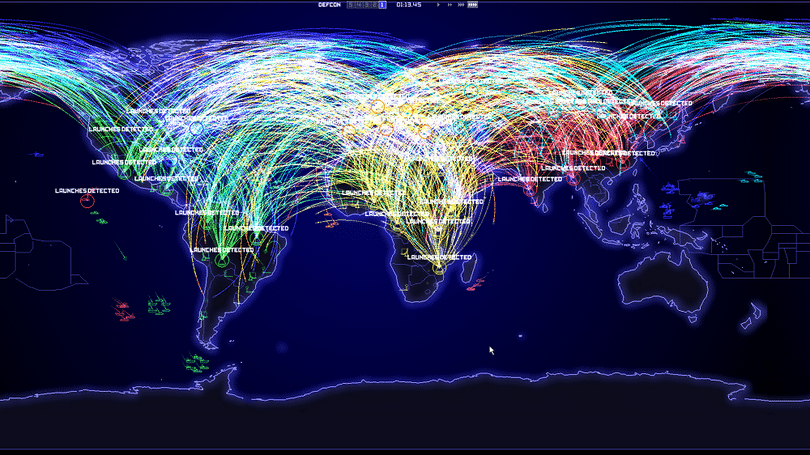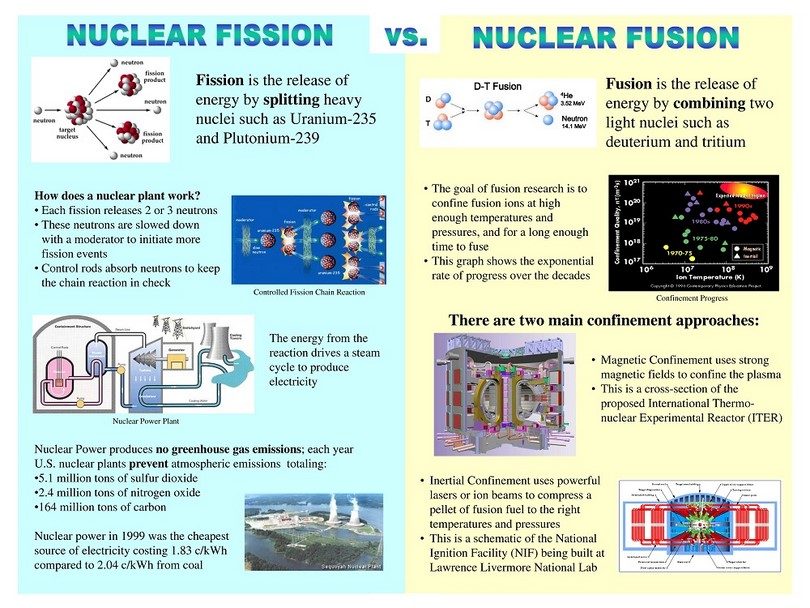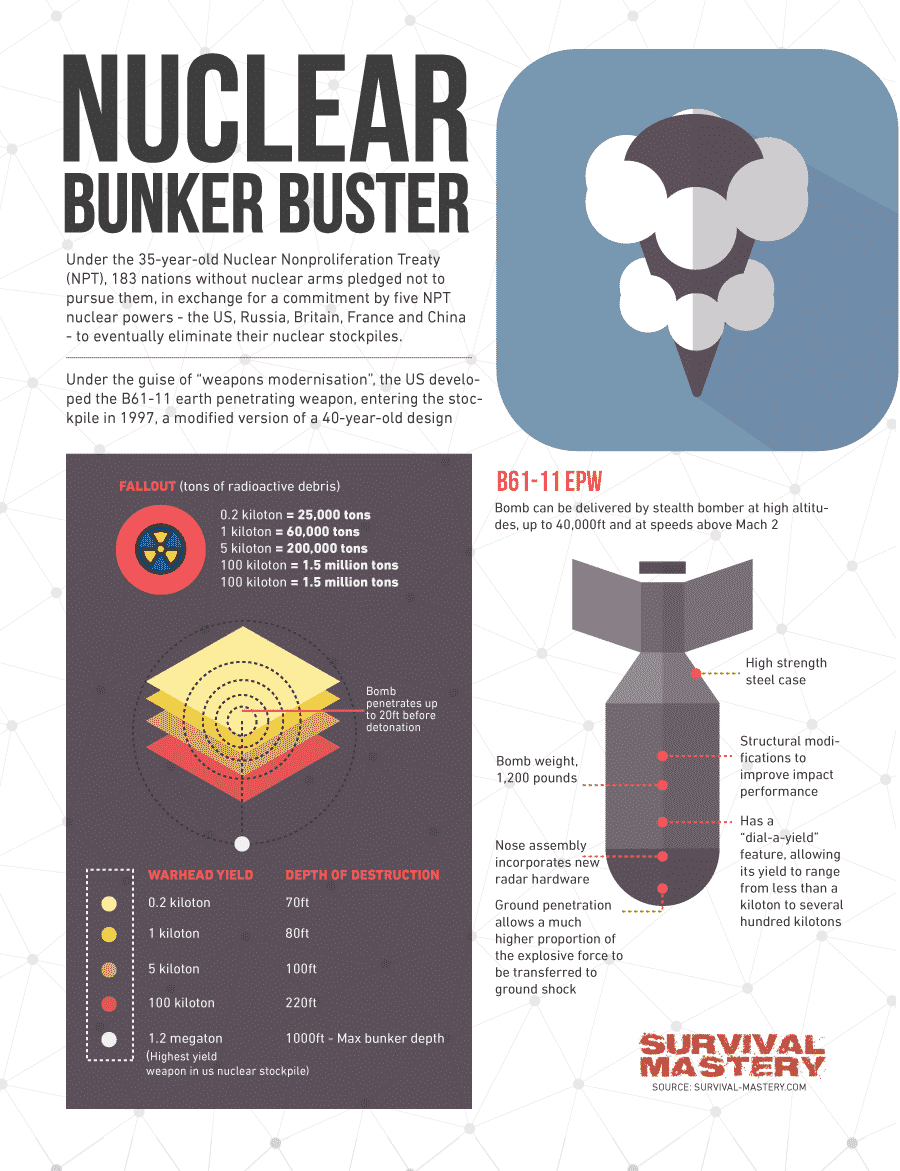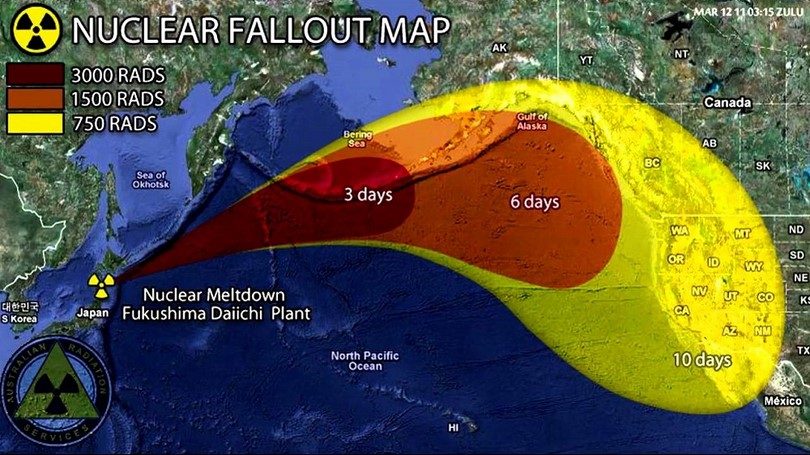ADDITIONAL ITEMS
Of course, don’t forget the flashlights, facial masks against dust, dirt, pollution, etc, duct tape and garbage and ordinary plastic bags. The sanitary items should be part of your first-aid kit. It they are not, place them all in a water-resistant plastic bag. Store some pliers and wrenches in case you need to shut off some of your home utilities, like the water pipes and gas.
STAY INFORMED
Nuclear attacks don’t happens just out of nowhere without a warning. If you watch the news and the political environment you should be able to pick from the news that there is some tension between two or more countries and the situation escalates. You should be mentally and physically prepared for the worst. As long as you stay well informed you won’t be surprised if a nuclear attack follows soon.

You can also follow the news on the web and see some escalating trends. The defense departments of most countries have their own web pages where they may issue a warning and give a rating for the escalating risk or even imminent attack. For example, in the USA you can follow the DEFCON (defense condition) rating level about the current situation.
PREPARING FOR THE NUCLEAR ATTACK
When you realize that the risk for a nuclear attack has risen so much that it’s only a matter of time, you need to assess which areas are safer than others. For example, military and naval bases are much more in danger to be attacked. Other similar risky areas can be commercial ports, shopping centers, and other public places.
Governmental buildings are also at high risk. Overall, cities and towns with large population are also risky and likely to be attacked. In this regards, it’s best to evacuate if you’re living nearby any of these, or are living in a large city or capital. We highly advise you to move to the countryside, away from military ground.
KNOWLEDGE ABOUT NUCLEAR BOMBS
It may be unpleasant learning more in-depth about nuclear bombs. The knowledge though can be helpful in certain situations. There are two types of nuclear bombs – A- and H-bombs. The first are called fission and the second fusion bombs.
Fission bombs are most likely to be used in war times, and have been used in the recent past. They incorporate plutonium and uranium atoms, which upon splitting release incredible energy and also neutrons. In the bomb itself (before the explosion) there are also neutrons. When the daughter neutrons are released this causes a chain reaction of releasing more and more neutrons.

Fusion bombs on the other hand can release much larger amounts of energy – hundred times more than fission bombs. They use deuterium and tritium, which upon sparking the light, get heated up to enormous temperatures. When they fuse (hence the name of the bomb), they release massive energy, which as we said is hundred and thousand times more powerful and destructive. Unfortunately, most of the nuclear bombs owned by USA and Russia are fusion bombs.
WHEN IMMINENT ATTACK OCCURS
This is when you need to act immediately. Wherever you are during the attack, you need to find a shelter nearby. You should recognize that a bomb has exploded either by the sounds or the strong illumination. Don’t look directly into the light of the blast. Depending on how close you are to the explosion, you may have from a few seconds to 15 to find shelter. If you’re too close to the explosion there is virtually no possibility of survival due to the strong thermal and shock waves, including the strong radiation itself.

If there is no visible shelter near you, begin digging as fast as you can. If you’re in the city, educate yourself if there are bomb shelters and where they are – do that before any risk of nuclear attack exist. When the explosion occurs, head immediately to the closest bomb shelter, if it’s no more than a few seconds from you. That is of course a long shot, so we advise you to simply look for any type of shelter.
Of course, most buildings aren’t strong enough to withstand the shock wave blast, but if the bomb is more than 15-20 miles away from you, you may only feel the heat wave (which can burn your skin, so stay inside!). Also, stay away from explosives, flammable material and turn off the electric appliances if you have time.
After the blast has subsided and you’re still alive and safe (for now) you need to know more about the radiation fallout. It has been estimated that people who died of the radiation, but not from the blast and heat waves, were very few. This means that if you survived the initial attack you have a chance of surviving the fallout, if you follow certain rules.
Radiation fallout can be much dangerous though. The radiation particles which were blasted off in the air, during the explosion, will begin to fall to the ground. They are too many to think you’re safe. Everything they fall onto will be contaminated and unsafe for you – food and water including. There is also the black soot, also known as ‘black rain’, which is also searing hot and can quickly burn your skin.

After the blast you must remain at your shelter about 8 days at least. This is when the black rain will occur. Depending on the weather conditions, the soot may be blown by strong winds and it may be safe after less than 8 days (or more). You are still to remain in your shelter for the recommended minimum. Two days is the absolute minimum. If you exit the shelter in less than two days you risk perishing.
So you may wonder what is so dangerous about the after-blast. There are the so-called ‘fussion products’ produced by the nuclear explosion. The radioactive iodine is one of the most dangerous and deadly. Its half-life is 8 days. After that, most of them will turn naturally into isotopes, safe for humans and organisms. For all the iodine atoms to decay, it takes 90 days.
Caesium and Strontium are the other two dangerous elements. These can have very long half-lives of up to 30 years. These are unfortunately absorbed by organisms and living beings and can accumulate in our bodies with time.
When it comes to eating food, you should entirely rely on your food supplies (read the first section in this article). If your supplies finish sooner than you expected, you may have to search for food outside your shelter. Make sure it’s later than the minimum 8 days. There is of course a risk that any animal or plant food will be contaminated, thus you will expose yourself to further risk. If you would like to stay in your shelter for at least 2 weeks before leaving it, you should eat sparingly and ration your food wisely.
Certain plants though can be edible, and root plants like potatoes and carrots can be eaten. They can be your best option. If you have to eat animals, skin them and stay away from the meat close to the bone, as bone and bone marrow absorb radiation. Water can be dangerous as it will contain radiation fallout particles. Underground water sources may be much safer. You can consider also building solar still and make sure to always boil the water.
...[ Continue to next page ]
Share This Post














